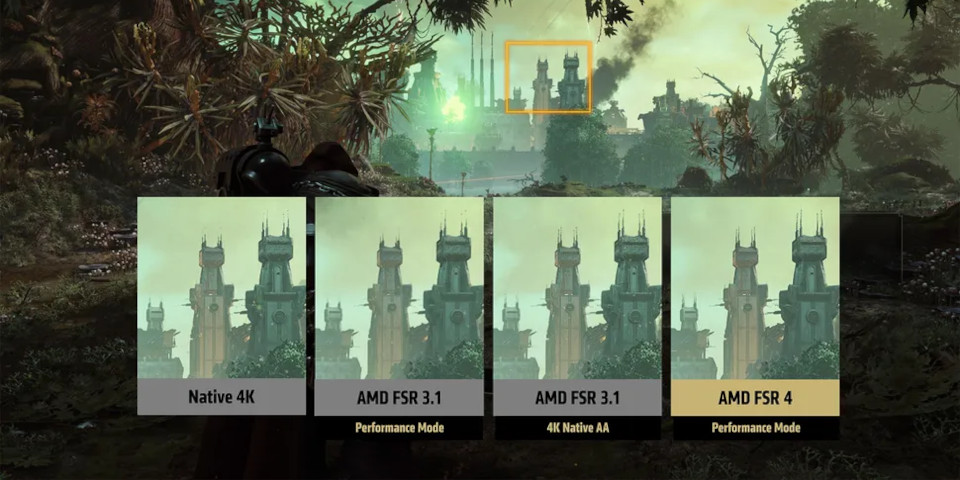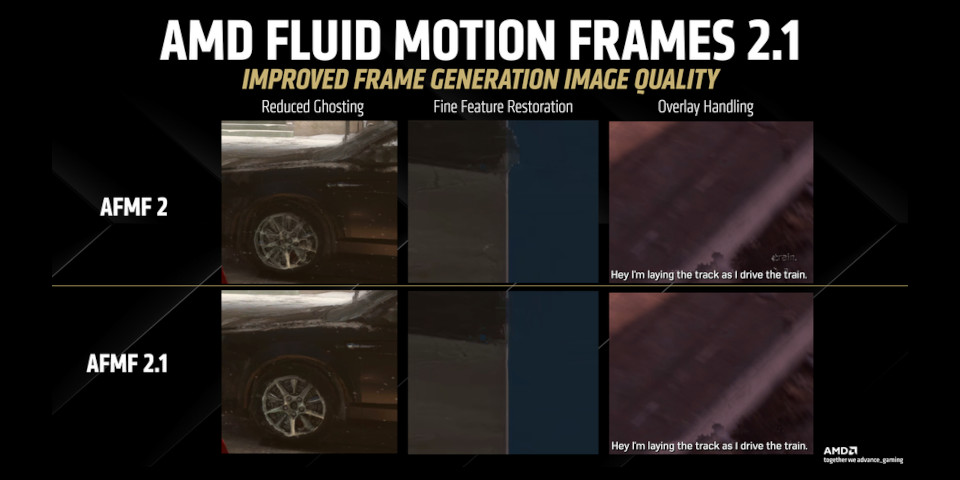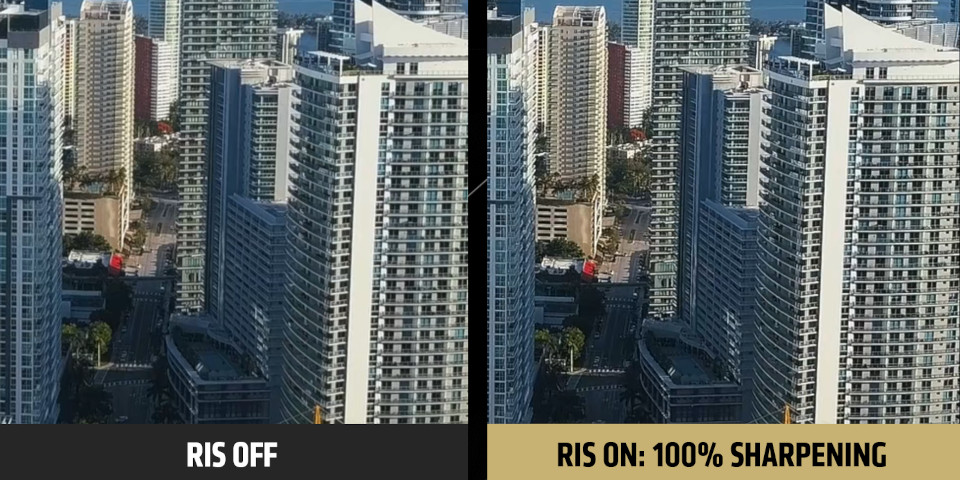AMD launches FSR 4, AFMF 2.1 and RIS 2.0
AMD has released AMD Software: Adrenalin Edition 25.3.1, the latest version of its drivers for its consumer GPUs, including updates to three of its AI-based technologies.
In-driver frame-generation system AMD Fluid Motion Frames (AFMF) has been updated to version 2.1, and image-sharpening system Radeon Image Sharpening (RIS) to version 2.0.
The release also includes an upgrade feature for render upscaling system FidelityFX Super Resolution (FSR), with users able to update games and CG apps that support FSR 3.1 to FSR 4.
The update was released alongside the Radeon RX 9070 and 9070 XT, the first cards in AMD’s new RDNA 4-based Radeon RX 9000 Series, and both FSR 4 and RIS 2.0 require the new GPUs.
FSR: render upscaling improves viewport frame rates in games and CG software
Introduced in 2021, FSR is a GPU-based image upscaling system, equivalent to NVIDIA’s Deep Learning Super Sampling (DLSS) and Intel’s Xe Super Sampling (XeSS).
It enables software to render the screen at lower resolution, then upscale the result to the actual resolution of the user’s monitor.
The workflow improves frame rates over rendering natively at the higher resolution, without significant loss of visual quality if the upscaling isn’t too extreme.
As well as games, FSR is supported by some CG software, including real-time visualization apps Lumion, where it is used in the editor and render preview, and D5 Render.

FSR 4: better detail preservation and temporal stability
Perhaps learning from the previous major release, FSR 3, which was only supported by two games at launch, AMD has made FSR 4 available as a drop-in replacement for FSR 3.1.
Users with new Radeon RX 9070 Series GPUs can upgrade any game that already supports FSR 3.1, the current version of the technology, to FSR 4.
That includes Call of Duty: Black Ops 6, God of War: Ragnarök and Marvel Rivals: you can see a list of the “30+ games” in which the upgrade is or will be available on AMD’s blog.
The update provides a “significant” improvement in image quality over FSR 3.1 upscaling, improving temporal stability and detail preservation, and reducing ghosting.

AFMF 2.1: better handling of details and on-screen text overlays
AMD Software: Adrenalin Edition 25.3.1 also updates AMD Fluid Motion Frames, its in-driver system for increasing frame rates by generating frames between those rendered conventionally.
It was originally rolled out last year as part of HYPR-RX, AMD’s set of technologies for improving in-game performance.
AFMF 2.1 improves the visual quality of the frames generated: according to AMD, it reduces ghosting, restores details, and handles on-screen text overlays better.
As an in-driver technology, it works across “thousands of games”: AMD’s blog post has performance comparisons for Baldur’s Gate 3, Borderlands 3, Far Cry 6 and Forza Horizon 5.

RIS 2.0: more responsive image-sharpening, particularly in non-games apps like VLC
The Adrenalin Edition 25.3.1 release also features the first major update to contrast-adaptive image-sharpening system Radeon Image Sharpening since it was introduced in 2019.
RIS 2.0 provides “stronger, more responsive sharpening in more use cases”, particularly video playback.
As well as games, RIS is supported in a range of other apps, including web browsers like Chrome, Edge and Firefox, Microsoft Office apps, and the VLC media player.
Licensing and system requirements
The FSR 4 upgrade feature, AFMF 2.1 and Radeon Image Sharpening 2.0 are available as part the 25.3.1 release of AMD Software: Adrenalin Edition.
The FSR 4 upgrade is available for software that already integrates FSR 3.1, part of version 1.1.13 of the FidelityFX SDK. The source code is available under an open-source MIT license.
FSR 4 and RIS 2.0 require a Radeon RX 9070 Series GPU; AFMF 2.1 is supported on Radeon RX 6000 Series and newer GPUs, and integrated graphics on Ryzen AI 300 Series CPUs.
Read more about FSR 4, AFMF 2.1 and Radeon Image Sharpening 2 on AMD’s blog
Have your say on this story by following CG Channel on Facebook, Instagram and X (formerly Twitter). As well as being able to comment on stories, followers of our social media accounts can see videos we don’t post on the site itself, including making-ofs for the latest VFX movies, animations, games cinematics and motion graphics projects.
